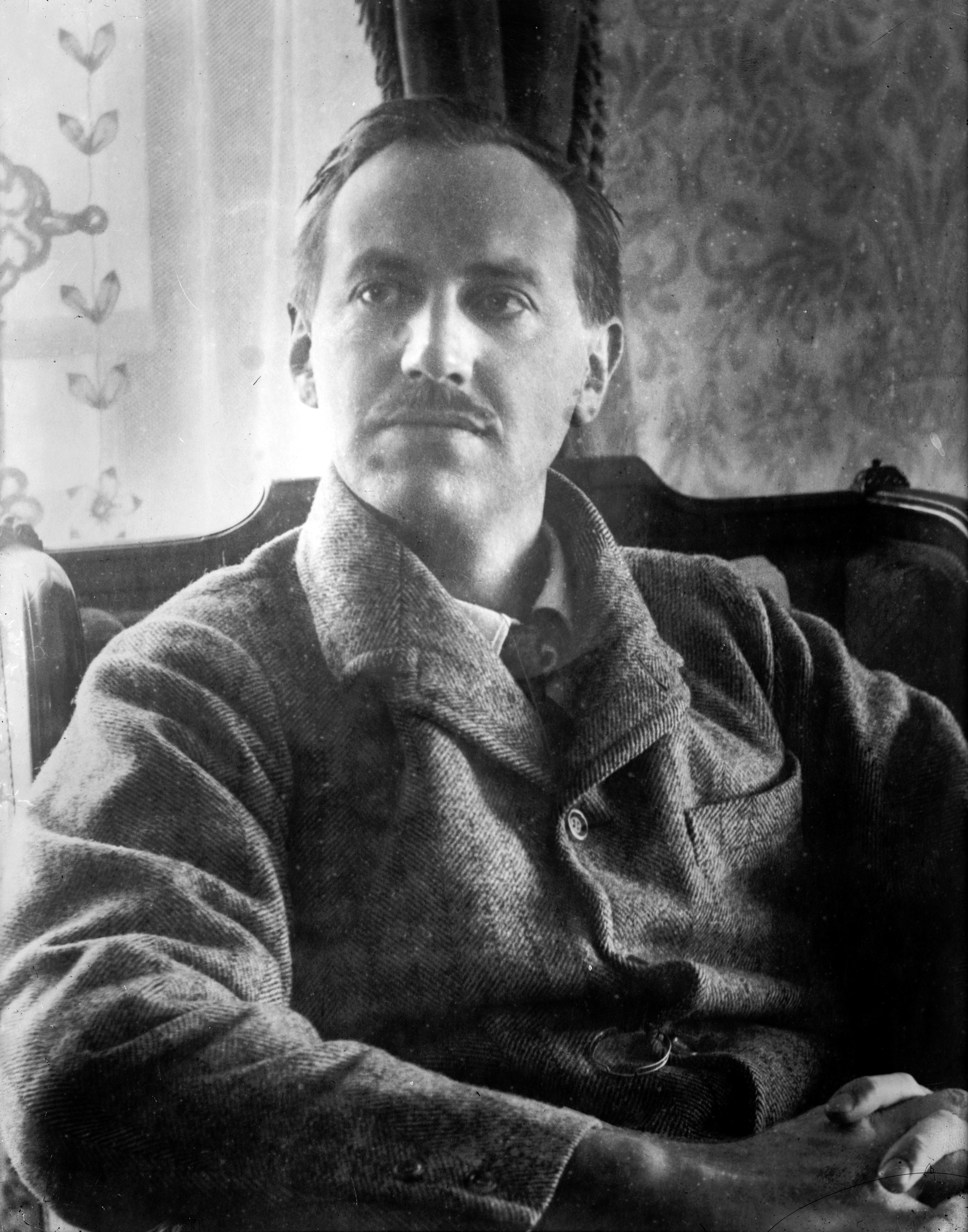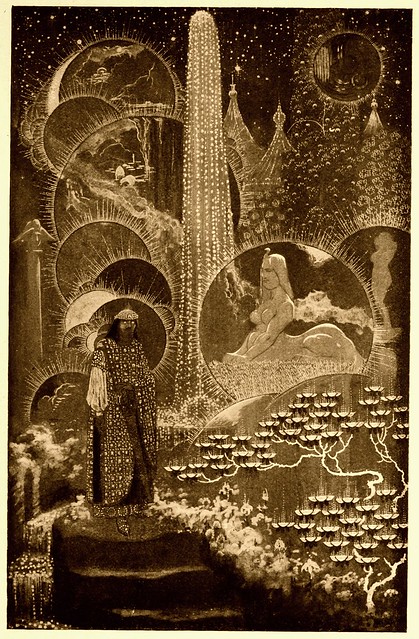
Get It For Free Right Over
HERE
HERE

He is the fantasy author's author, Edward John Moreton Drax Plunkett, 18th Baron of Dunsany whose works have influenced everyone from Lovecraft to Neil Gaiman.
According to Wiki :
Edward John Moreton Drax Plunkett, 18th Baron of Dunsany (24 July 1878 – 25 October 1957) was an Irish writer and dramatist, notable for his work, mostly in fantasy, published under the name Lord Dunsany. More than eighty books of his work were published, and his oeuvre includes many hundreds of published short stories, as well as successful plays, novels and essays.
Born to the second-oldest title (created 1439) in the Irish peerage, Dunsany lived much of his life at perhaps Ireland's longest-inhabited home, Dunsany Castle near Tara, worked with W.B. Yeats and Lady Gregory, received an honorary doctorate from Trinity College, was chess and pistol-shooting champion of Ireland, and travelled and hunted extensively. He died in Dublin after an attack of appendicitis.
You can find more from Wiki HERE
The Book of Wonder Appeared in 1912 and the book is still a classic
You can find more from Wiki HERE
The Book of Wonder Appeared in 1912 and the book is still a classic
The opening paragraph of "The Hoard of the Gibbelins" from The Book of Wonder, (1912) gives a good indication of both the tone and tenor of Dunsany's style at the time:
- The Gibbelins eat, as is well known, nothing less good than man. Their evil tower is joined to Terra Cognita, to the lands we know, by a bridge. Their hoard is beyond reason; avarice has no use for it; they have a separate cellar for emeralds and a separate cellar for sapphires; they have filled a hole with gold and dig it up when they need it. And the only use that is known for their ridiculous wealth is to attract to their larder a continual supply of food. In times of famine they have even been known to scatter rubies abroad, a little trail of them to some city of Man, and sure enough their larders would soon be full again.
The Origin of the Book of Wonder 

I consider the Book of Wonder essential to table top rpging. The stories, imagery, throughout are classic and its echos are still seen in many corners of dark fantasy, horror, science fiction, and the list goes on.
According to wiki its origins are as follows.
According to wiki its origins are as follows.
The Book of Wonder is the seventh book and fifth original short story collection of Irish fantasy writer Lord Dunsany, considered a major influence on the work of J. R. R. Tolkien, H. P. Lovecraft, Ursula K. Le Guin and others. It was first published in hardcover byWilliam Heinemann in November, 1912, and has been reprinted a number of times since. A 1918 edition from the Modern Library was actually a combined edition with Time and the Gods.
The book collects fourteen fantasy short stories by the author.
Lord Dunsany employed the remarkable talents of Sidney Sime to illustrate his fantasy short story collections, but The Book of Wonder is unique in that Sydney Sime drew the illustrations first, and Lord Dunsany wrote the tales around them:
'I found Mr Sime one day, in his strange house at Worplesdon, complaining that editors did not offer him very suitable subjects for illustration; so I said: "Why not do any pictures you like, and I will write stories explaining them, which may add a little to their mystery?"
The Creative Mountain Games Collection

The creative Mountain Games collection is well organized and solidly presented in forty six pages.
According to Drivethrurpg the collection contains the following

The creative Mountain Games collection is well organized and solidly presented in forty six pages.
According to Drivethrurpg the collection contains the following
Many of the older gamers among us can recall reading Howard, Lieber, or Tolkien, but how many harken back to the tales of Lord Dunsany's The Book of Wonder? Now is your chance to catch up with this Fantasy Classic in PDF (eBook) format. Inside are such classic short stories as...
- THE BRIDE OF THE MAN-HORSE
- DISTRESSING TALE OF THANGOBRIND THE JEWELLER
- THE HOUSE OF THE SPHINX
- PROBABLE ADVENTURE OF THE THREE LITERARY MEN
- THE INJUDICOUS PRAYERS OF POMBO THE IDOLATER
- THE LOOT OF BOMBASHARNA
- MISS CUBBIDGE AND THE DRAGON OF ROMANCE
- THE QUEST OF THE QUEEN'S TEARS
- THE HOARD OF THE GIBBELINS
- HOW NUTH WOULD HAVE PRACTISED HIS ART UPON THE GNOLES
- HOW ONE CAME, AS WAS FORETOLD, TO THE CITY OF NEVER
- THE CORONATION OF MR. THOMAS SHAP
- CHU-BU AND SHEEMISH
- THE WONDERFUL WINDOW
There's more than a few surprises and familiar faces to be found, and it's free to you with our compliments. Enjoy!
Bottom line - Download and get this collection of classics.
You can find more of the classics of Baron Edward John Moreton Drax Plunkett Dunsany, 1878-1957
You can find more of the classics of Baron Edward John Moreton Drax Plunkett Dunsany, 1878-1957
Right over
HERE
Please note that these may not be the style of tales you might be used to for they have no ending per say at all. They are exercises in elegance and a high fantasy style that we shall not see again. They've influenced a good solid segment of our hobby from its very roots and beyond. HERE

am really enjoying these retrospective posts looking at the roots of fantasy literature that still influence D&D today.
ReplyDeleteDunsany is one of my favourites and is always worth reading
I really like Lord Dunsany. It's good that you made the comment about his writing style, it's so different from modern fiction. But aside from the tales themselves it's fascinating to see the evolution of the genre. You can see his influence on a lot of writers even today.
ReplyDeleteThe man's work has stood the test of time that's for sure. But the writing style is very different to many modern readers who aren't used to it. I'll be covering a bit more of this for a day or so.
ReplyDelete